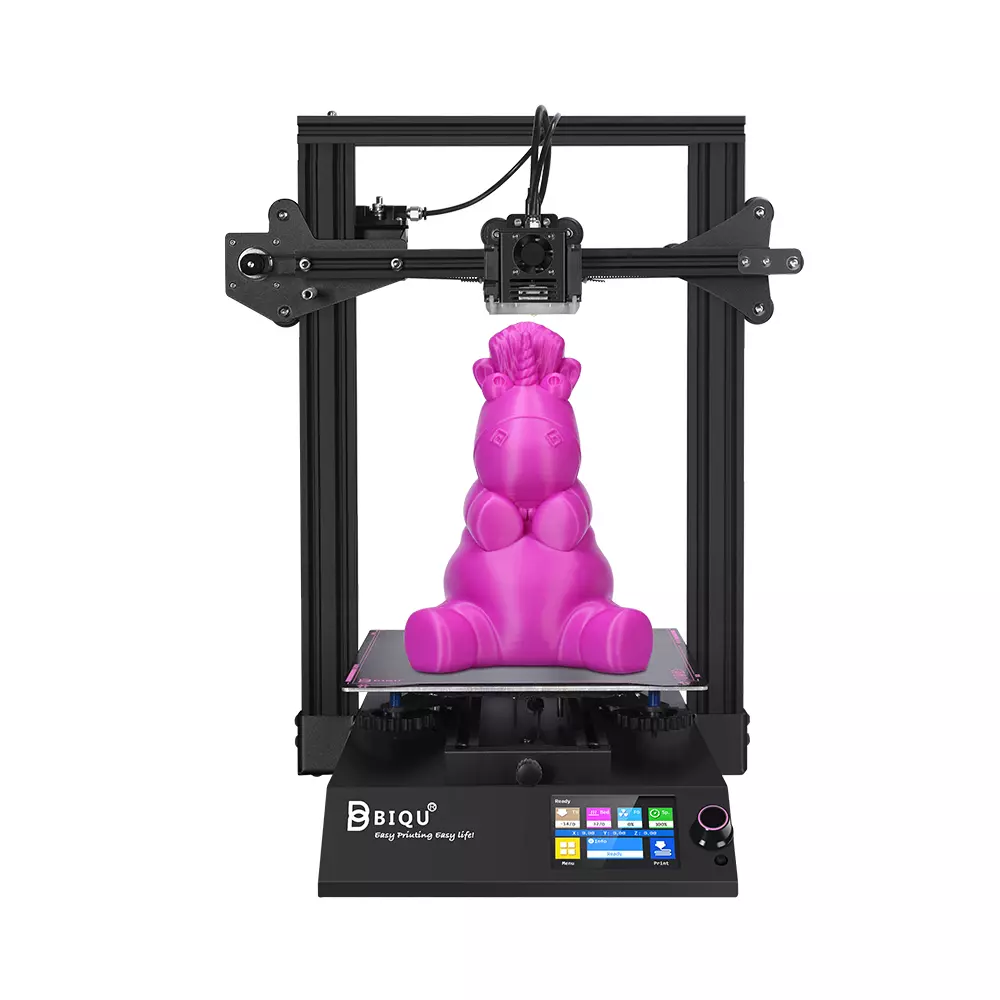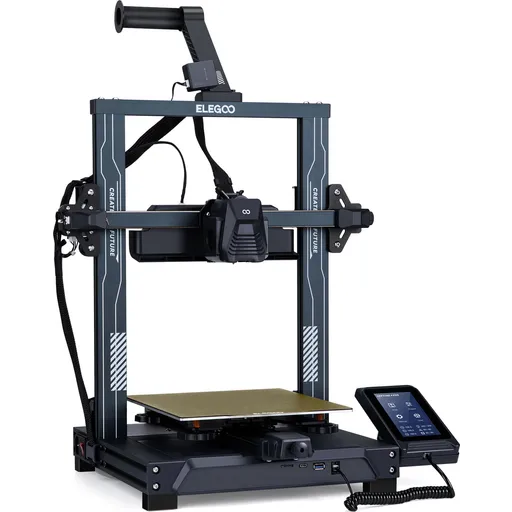Compare BIQU B1 vs Neptune 4 PRO
Comparison between the best 3D printers
Choose the best 3D printer at the best price. The cheapest 3D printers are here.
Buy a 3D printer here with 3D Fila.
 |
 |
|
| Model | BIQU B1 |
Neptune 4 PRO |
| Printing Material | Filament | Filament |
| Buy Filament for BigTreeTech BIQU B1 | Buy Filament forElegoo Neptune 4 PRO | |
| Estimated price | $269,00 | $359,00 |
| Manufacturer | BigTreeTech | Elegoo |
| Release Year | 2020 | 2023 |
| Print Volume [mm] | 235x235x270 | 225x225x265 |
| Printer Size [mm] | 412x402x492 | 475x445x515 |
| Weight [kg] | 8,00 | 8,9 |
| Power Loss Recovery | YES | YES |
| Enclosed printer | NO | NO |
| Bed Leveling | Manual | Automatic |
| Filament End Sensor | YES | YES |
| Bed type | Heated | Heated |
| Power supply system | Bowden | Direct Drive |
| Standard nozzle | 0,4 | 0,4 |
| Maximum Nozzle Temperature [°C] | 250 | 300 |
| Maximum Bed Temperature [°C] | 100 | 110 |
| Maximum printing speed [mm/s] | 100 | 500 |
| Filament holder | YES | YES |
| Camera for supervision | NO | NO |
| Recommended filaments | PLA, TPU, ABS, PETG | PLA, PLA+, TPU, PETG, Nylon, ABS |
| Recommended slicers | Cura, Simplify, Slic3r | Bambu Studio, Super Slicer, Cura, Prusa Slicer, Orca |
| Maximum Resolution [mm] | 0,1 | 0,1 |
| Processor | 32 Bits BTT SKR V 1.4 | ARM 64 bit |
| Display | Touchscreen TFT 3,5'' | Touchscreen 4,3'' |
| Power Supply | 24V / 360W | 310 W |
| Connectivity | SD / USB | USB, microSD |
| Operating systems | Windows, Mac, Linux | Windows, Linux, Macbook |
| Date of registration in the system | 2021-04-14 | 2024-07-02 |
| Release date | 2020 | 2023 |
| Extra features | The BIQU B1 is an advanced 3D printer with a silent 32-bit BTT SKR V1.4 motherboard and ARM Cortex-M3 CPU, offering DIY interfaces (I2C, SPI, WiFi) and dual Z-axis. Its dual BTT B1 TFT35 V3.0 operating system allows real-time monitoring and multiple printing modes, including G-code visualization effects. It stands out for its BIQU SSS (Super Spring Steel), ensuring easy model adhesion and simplified removal, with the possibility of using it on both sides. It includes a filament sensor, automatically pausing printing in case of filament breakage. The multicolored RGB lights integrated into the hotend allow you to view the printing status even at night. Additional notes include the need for a BIQU-specific Type-C cable and extra interfaces for smart filament sensor and BL Touch. | The Elegoo Neptune 4 Pro stands out for its advanced features, including pre-installed Klipper firmware, a dual-gear direct extruder with a 5.2:1 ratio, a high-temperature nozzle (up to 300°C), a flexible magnetic PEI platform, efficient cooling fans, and a 121-point auto-leveling system. The printer also features a 4.3-inch touchscreen interface, dual linear bars on the X and Y axes, and a segmented heated bed for energy savings. |
| Support for multiple colors and materials (AMS and CFS) | NO | NO |
Notes * |
||
| Cost-benefit | 7 / 10 | 7 / 10 |
| Hardware | 2 / 10 | 3.2 / 10 |
| Tela | . | . |
| Print volume | 3 / 10 | 3 / 10 |
| Performance | 1 / 10 | 4 / 10 |
Conclusion |
| When comparing the BIQU B1 and the Elegoo Neptune 4 Pro, several factors highlight their differences and suitability for various users. The BIQU B1, being an older model from 2020, offers a lower price point and a solid range of features. It includes a manual bed leveling system and is capable of printing with several common filaments. Its build volume is slightly larger than that of the Neptune 4 Pro, and it features a silent 32-bit motherboard optimized for a smoother printing experience. However, its manual bed leveling may be a drawback for those seeking convenience and ease of setup. On the other hand, the Elegoo Neptune 4 Pro, released in 2023, justifies its higher price with a plethora of advanced features. It boasts automatic bed leveling, a direct drive extruder, a higher maximum nozzle temperature, and a significantly increased maximum printing speed, making it more suitable for serious hobbyists or professionals looking for high-quality prints in a shorter time frame. The pre-installed Klipper firmware further enhances its performance, offering more user-friendly controls via the touchscreen interface. In summary, the choice between the two printers largely depends on the user's specific needs and budget. The BIQU B1 presents a cost-effective solution for beginners or casual users, while the Elegoo Neptune 4 Pro caters to more advanced users seeking superior performance and convenience. Consequently, for those who prioritize features and print quality, the Neptune 4 Pro likely represents a better overall investment, whereas the BIQU B1 offers a strong entry-level option for those just starting in the world of 3D printing. |

